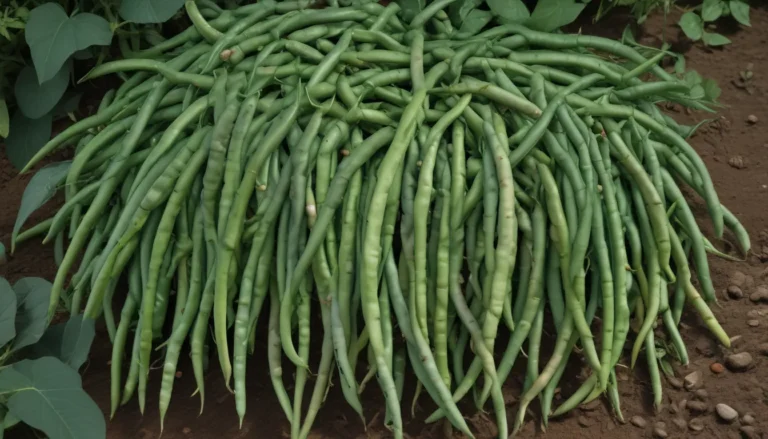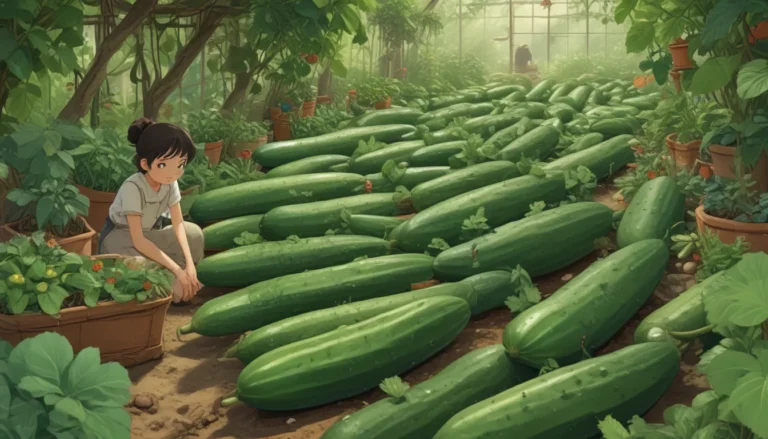Everything You Need to Know About Propagating Blueberry Bushes

Are you a fan of homegrown blueberries? Who isn’t, right? But imagine having even more of those delicious blueberries right in your backyard! If you want to expand your berry patch or get started growing blueberries, why not try propagating your own bushes? It’s rewarding, cost-effective, and a fun way to increase your blueberry yield.
In this comprehensive guide, we will cover four different propagation methods that you can use to grow blueberry bushes at home. So, let’s dive right in and learn how to propagate blueberry bushes like a pro!
Blueberry Propagation Methods
- Cuttings
- Layering
- Seeds
- Suckers
Whether you want to expand your existing plants or start a new berry patch from scratch, one of these propagation methods will suit your needs perfectly.
Cuttings
Blueberries can be propagated using either softwood or hardwood stem cuttings. Softwood cuttings are often preferred for their quick rooting success, making them the go-to method for commercial growers. When taking cuttings, always choose the healthiest branches from the strongest mother plants for the best results.
To create a good propagation mixture for either type of cutting, combine equal parts of coarse sand, ground pine bark, and peat moss, or equal parts perlite and peat moss. Make sure to moisten the mixture before inserting the cuttings, but avoid saturating it.
Here are the detailed steps for propagating blueberries using softwood cuttings:
Softwood Cuttings
Softwood cuttings are taken from the top growth of the current season’s branches. The terminal leaves at the end of the stem should be half-grown to nearly mature, and the stems should be flexible but not too soft. Cuttings taken at the right stage will root faster and more successfully.
Collect cuttings early in the morning using sharp, clean tools, and be sure to disinfect them if necessary. Remove lower leaves, leaving three terminal leaves at the top. Keep the cuttings moist and cool while collecting them to prevent wilting.
After preparing the cuttings, place them in a suitable container with a moist medium and keep them in a low-light area with a stable temperature of around 70°F. Remember to maintain proper moisture levels and ensure good aeration to aid rooting.
Softwood cuttings should root within six to eight weeks. Once rooted, fertilize lightly and continue to care for the plants by maintaining even moisture levels.
Hardwood Cuttings
Hardwood cuttings are taken during the dormant season after sufficient chilling period. These cuttings can take up to six months to root but are relatively easy to propagate with patience and proper care. Here are the steps for propagating blueberries using hardwood cuttings:
- Collect hardwood shoots in the early spring after the chilling period.
- Divide the shoots into smaller sections and cut them at an angle.
- Plant the cuttings in a moist medium and keep them in a shaded area for rooting.
- Maintain proper moisture levels and provide adequate ventilation to aid in rooting.
Hardwood cuttings will root eventually, and once rooted, apply a diluted fertilizer regularly until the fall season. Transplant the rooted cuttings into larger pots and let them grow for another year before planting them in their permanent positions.
Layering
Layering is an alternative propagation method that doesn’t involve cutting the branches. This method is simple and requires a flexible branch that can bend to the ground level. Here’s how you can propagate blueberries using layering:
- Find a flexible young shoot and remove leaves from the top section.
- Make a slit in the stem, apply rooting hormone, and bury the stem in moist soil.
- Keep the buried section moist and wait for roots to develop.
- Once rooted, sever the new plant from the mother plant and transplant it to a new location.
Layering is an effective way to propagate blueberries without the need for cutting and planting new stems.
Seeds
You can also propagate blueberries from seeds, either by purchasing them or extracting them from your own berries. Keep in mind that seeds from hybrid plants may not produce offspring with the exact qualities of the parent plant. Here’s how you can propagate blueberries from seeds:
- Extract seeds from frozen berries and dry them.
- Plant the seeds in a tray filled with moistened peat moss.
- Keep the seeds in a warm location and maintain proper moisture levels.
- Once seedlings emerge, transplant them into individual pots and fertilize lightly.
- Harden off the seedlings and transplant them into the ground or containers.
Growing blueberries from seeds is a rewarding experience, but it requires patience and attention to detail.
Suckers
If you notice new shoots growing a few inches away from the mother plant, you can propagate new bushes from these suckers. Allow the suckers to grow for at least two seasons before dividing them from the mother plant and transplanting them to a new location. This method is an easy way to increase your blueberry yield without much effort.
Propagating blueberry bushes is a fun and cost-effective way to grow more plants and enjoy a bountiful harvest of delicious blueberries. Whether you choose to use cuttings, layering, seeds, or suckers, each method has its unique advantages and can help you expand your blueberry patch with ease.
Have you ever tried propagating your own blueberries? Share your experiences in the comments below and let us know how it went!
Don’t forget to check out our other blueberry gardening guides for more tips and tricks:
- Tips for Growing Highbush Blueberries in Your Garden
- How to Harvest Perfectly Ripe Blueberries
- How to Protect Blueberries from Birds
- How to Identify and Manage Common Blueberry Pests and Diseases
Happy gardening, and may your blueberry harvest be plentiful!
Additional Resources:
– Amazon
– Arbico Organics
– Nature Hills Nursery
– Seeds for Brains
_*





